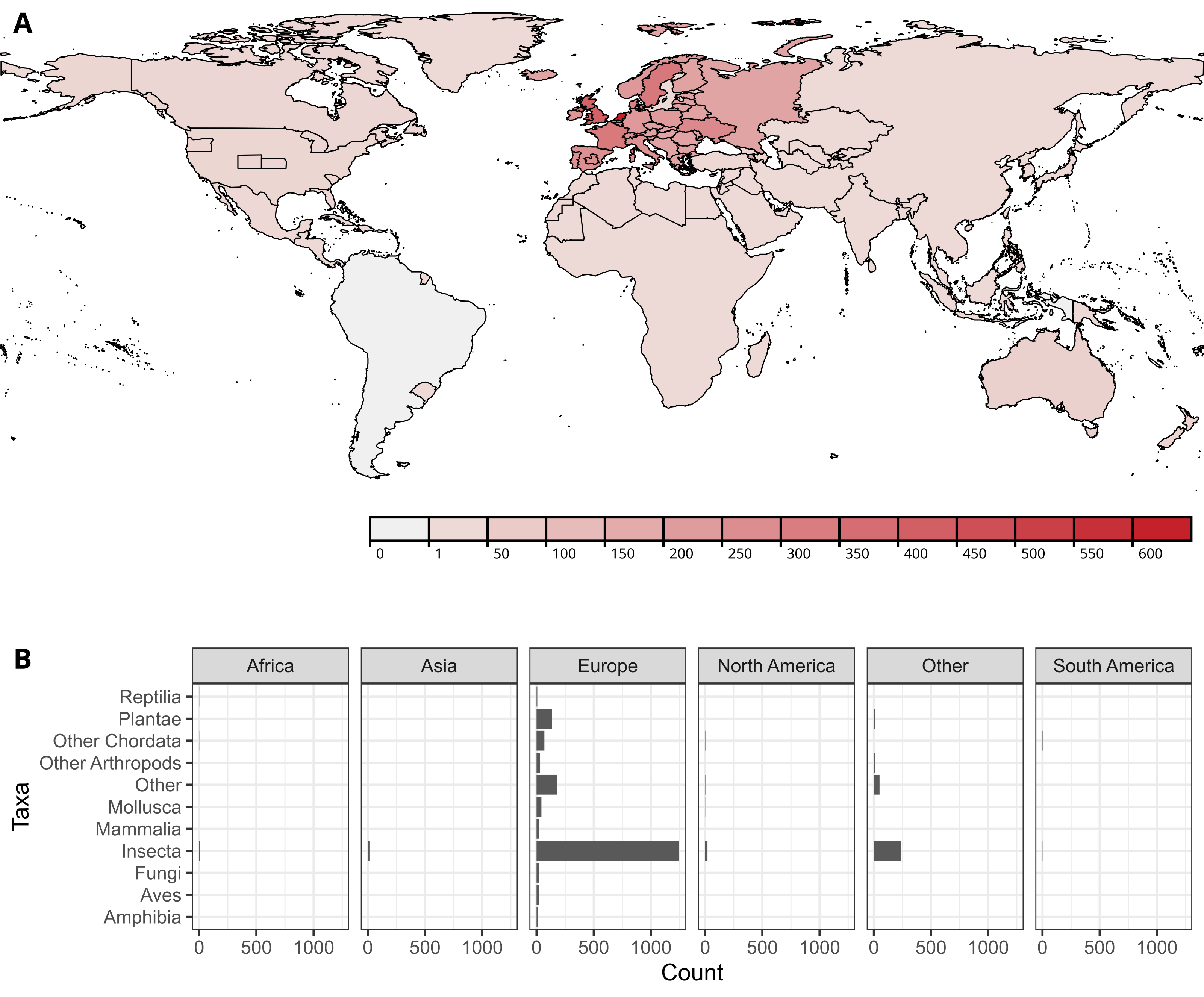In 2022, I started my Master’s in Biology, at Radboud University in the Netherlands where I had just finished my Bachelor’s degree. The Master’s programme includes two research internships of 36 EC (approx. 6 months), both of which include writing a thesis. As I had been working on a database of identification keys, I was interested in a project focused on taxonomy for my first research internship.
Thanks to Henk Siepel I ended up contacting Menno Schilthuizen at Naturalis, who suggested I work on Cholevinae larvae. Schilthuizen had been collecting Cholevinae larvae since the 1980s, and had also received material from Peter Zwick who started collecting larvae in different areas of Germany in the 1960s. The challenge was to use this material to make an identification key based on these specimens.
Although the first description of a larva of Cholevinae was published back in 1961 by J. C. Schiødte, descriptions have since been relatively few and far between. This also meant that there are almost no existing identification keys for the larval Cholevinae. Making these descriptions and keys is difficult, as you need larvae from a known species. This is only possible if the larvae are cultured from adults, which takes time and effort, if molts are collected and the emerged adults is identified, or if DNA barcoding can be used. The specimens collected by Zwick and Schilthuizen mainly used the first method.
However, there happened to be a recent, detailed description of Sciodrepoides watsoni, a species for which I also had specimens. I started by comparing the larvae of S. watosni (as well as a few of the related S. fumatus) to the drawings and descriptions made by Kilian and Mądra. From there, I could start looking at different species and identify potential areas and types of characteristics that are consistent enough within a species, but that differ between separate species. To illustrate these differences I also made schematic drawings (Fig. 1) of different sets of characteristic features. Finally, I measured certain parts of the larvae, where possible for specimens preserved in microscope slides.

Figure 1: Illustrations of Cholevinae larvae
At the end of the 6 months, I had a complete key to all species for which specimens were available, but only for the 1st instar. When the larvae molt for the first time, they gain secondary bristles, grow in size, and more, meaning the identifying characteristics cannot always be used for both the 1st instar, and the 2nd and 3rd instars. I ended up spending another year or so to finalize the key for all instars. This includes 28 of the 39 species of Cholevinae occurring in the Netherlands, and a lot of descriptions for which no (detailed) description was available previously. In a true full circle moment, I could add my own work to the aforementioned database of identification keys (as B1860).
Ultimately, collaborating with Schilthuizen, Siepel, and Zwick, this culminated in an article, Comparative morphology of the larval stages of Cholevinae (Coleoptera: Leiodidae), with special reference to those in the Netherlands. We were able to publish this in the final issue of Tijdschrift voor Entomologie, which is unfortunately being discontinued after 167 volumes. Again, many thanks to Menno Schilthuizen, Peter Zwick, and Henk Siepel for this great opportunity. Check it out!
References
- Willighagen, L. (2022, augustus 6). Library of Identification Resources. Syntaxus Baccata. https://doi.org/10.59350/h8qka-z4a05
- Schiødte, J. C. (1861). De metamorphosi eleutheratorum observationes: Bidrag til insekternes udviklingshistorie (pp. 1–558). Thieles Bogtrykkeri. https://doi.org/10.5962/bhl.title.8797
- Kilian, A., & Mądra, A. (2015). Comments on the biology of Sciodrepoides watsoni watsoni (Spence, 1813) with descriptions of larvae and pupa (Coleoptera: Leiodidae: Cholevinae). Zootaxa, 3955(1), 45–64. https://doi.org/10.11646/zootaxa.3955.1.2
- Willighagen, L. G., Schilthuizen, M., Siepel, H., & Zwick, P. (2025). Comparative morphology of the larval stages of Cholevinae (Coleoptera: Leiodidae), with special reference to those in the Netherlands. Tijdschrift Voor Entomologie, 167, 59–101. https://doi.org/10.1163/22119434-bja10033
Written with StackEdit.








